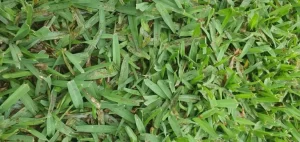
Armyworm Are On Their Way! How To Prepare For The Attack…
Armyworm Armyworm can scalp an entire lawn in just a few days. Make sure you take action urgently if you see these pests in large
There are benefits to fertilising your lawn during winter, however it isn’t the same fertiliser you would use during the months of the year.
Once soil temperatures drop below 14 degrees your grass will start to slow down and go semi-dormant for the cool months ahead. This is a protection method warm-season grasses use to protect themselves from the harsh conditions of winter. Because most grasses in Australia are warm-season varieties, they never really go fully dormant and will continue to grow but at a much slower rate. It’s for this reason, they still have the capacity to take up some nutrients which will be aid in keeping them strong through winter.
Most lawn fertilisers have three key nutrients that are important to maintaining the health of your lawn, Nitrogen, Phosphorus and Potassium. Nitrogen is the largest component and is the one that promotes strong leaf growth. In the winter months though, leaf growth is minimal and no matter how much Nitrogen you throw at your lawn, it won’t react and establish any quicker than the temperatures allow.
If you are going to fertilise your lawn in winter, you need to look at what it is your lawn needs to stay healthy and strong when it is cold.
The key ingredient you will find in increased amounts in most winter fertilisers is Iron. Iron helps to strengthen your grass and improve leaf colour. Provided you have fertilised in autumn and have your lawn well prepared for winter, you will be looking at providing an additional treatment around July. You can apply Iron Chelate which will help to get better iron uptake for better results without Nitrogen promoting unnecessary growth.
It’s important you fertilise your lawn regularly throughout the year, with Autumn being the most important time. A strong, healthy lawn leading into winter is the key to having a healthy lawn on the other side.

Armyworm Armyworm can scalp an entire lawn in just a few days. Make sure you take action urgently if you see these pests in large

New breeds of grasses like TifTuf Hybrid Bermuda, have prompted a rise to a wave of aspiring grasses wanting to be just like TifTuf. It’s a remarkable grass, with a level of hype that has been rarely seen in the Australian turf industry, except for the likes of Sir Walter DNA Certified Buffalo. What TifTuf Hybrid Bermuda has that those other grasses do not, is data and lots of it.

Does your lawn have a disease, but you’re not sure what it is or how to remove it? Let’s look at common lawn diseases and the best ways to remove them.















Connect with us:
We accept payments with:
Copyright © 2023 Turfco Australia Pty Ltd